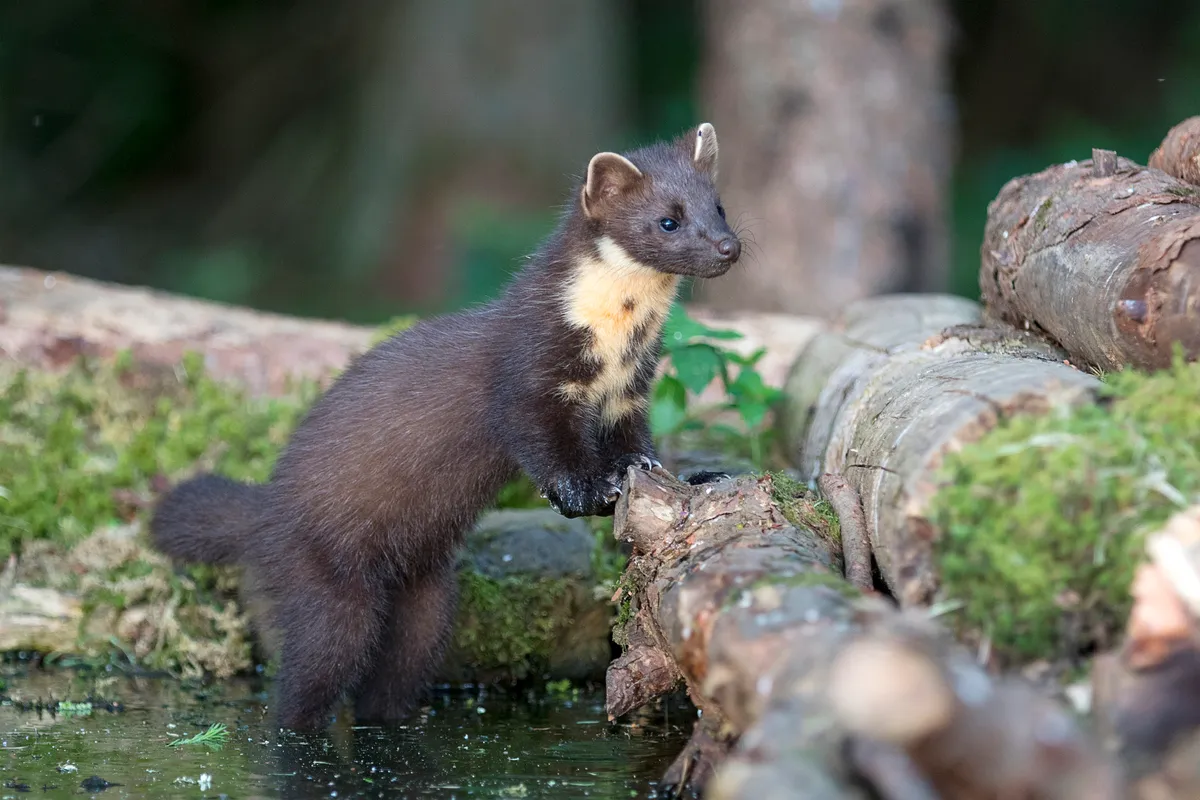Once a familiar feature of British woodlands, pine martens were driven to the brink of extinction by overhunting and habitat loss. However, a major milestone in their recovery has just been reached, with the release of 18 individuals into the Forest of Dean.
Between August and September this year, these pine martens were translocated from Scotland – where original populations still persist – to Gloucestershire. They were then fitted with tracking collars and released into the ancient forest.
These mammals, which belong to the same family as otters and weasels, have undergone such catastrophic decline that they are now Britain’s second-rarest native carnivore after the Scottish wildcat. Once widespread across the UK, they have been pushed to ever more remote regions.

This reintroduction may then be vital to preventing complete extinction in England. However, as well as supporting the recovery of the pine marten, this project could have beneficial effects across the forest ecosystem.
Pine martens play a vital role in the delicate balance of woodland ecosystems
"As native omnivores, pine martens play a vital role in the delicate balance of woodland ecosystems. Living at low densities in the landscape, they forage on fruit, fungi and a range of prey, including the grey squirrel – a non-native species that is having a detrimental impact on broadleaf woodland throughout England,” explains Rebecca Wilson, Forestry England’s planning and environment manager in West England.

The hope is that more introductions into this area will follow on from this successful one, and a population will be established. This new population could then spread and link up with those that were recently reintroduced in Wales. If so, their recovery in England and Wales might be assured, and they may once again become a flourishing native species.
It is hoped that their protection, alongside these reintroductions, will give them the boost they need to become resilient and thrive.
However, even if this is achieved, visitors to the forest should not expect to see this solitary mammal, as they are known to go out of their way to avoid humans and each other. As Catherine McNicol, Gloucestershire Wildlife Trust’s conservation project manager explains;
“Pine martens are elusive and shy animals, with their presence often only indicated by scats in the middle of forestry tracks. They only give birth to a few kits each year if breeding is even successful, so the rate of marten population recovery in the UK is low. It is hoped that their protection, alongside these reintroductions, will give them the boost they need to become resilient and thrive”.
Look out for a feature on these reintroduced pine martens in our November issue, on sale from 24 October.
Main Image: Pine marten on a log. © Richard McManus/Getty
